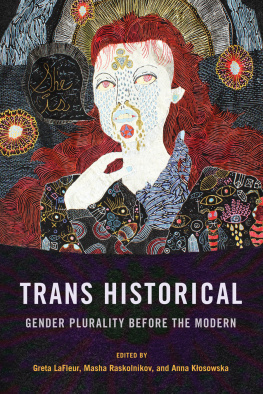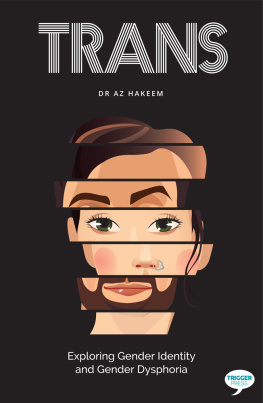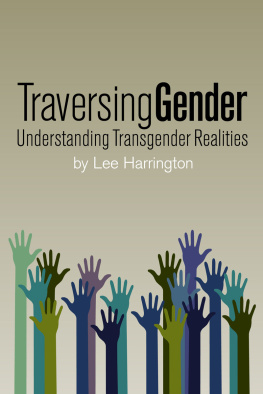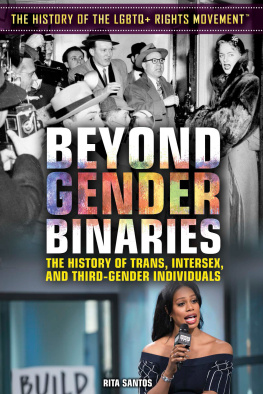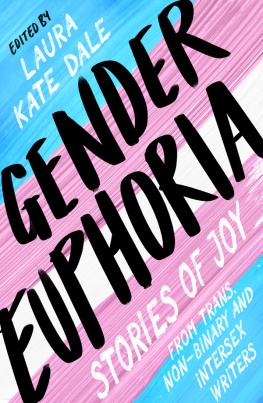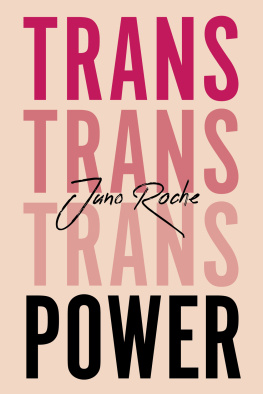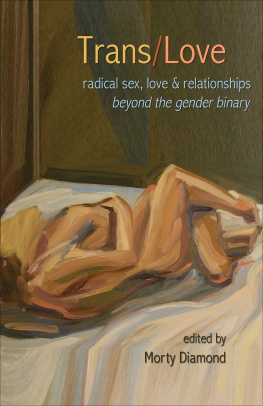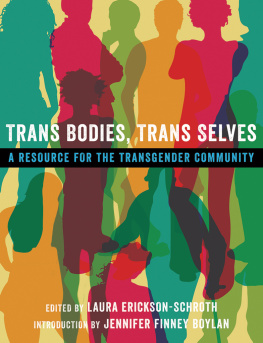CONTENTS
GRETA LAFLEUR, MASHA RASKOLNIKOV, AND ANNA KOSOWSKA
LEAH DEVUN
IGOR H. DE SOUZA
KATHLEEN PERRY LONG
M. W. BYCHOWSKI
ANNA KOSOWSKA
ROBERT MILLS
ABDULHAMIT ARVAS
MASHA RASKOLNIKOV
ZRINKA STAHULJAK
EMMA CAMPBELL
MICAH JAMES GOODRICH
ROLAND BETANCOURT
ALEXA ALICE JOUBIN
SCOTT LARSON
GRETA LAFLEUR
Guide
ACKNOWLEDGMENTS
The development of this volume transpired over almost four years, after Kathleen Perry Long brought us together at Cornell Universitys Transforming Bodies conference, under the auspices of the Early Modern Conversions Project in 2017. Her extraordinary intellectual and human generosity profoundly shaped the superb conference she organized, and we are so glad that the event had the collateral effect of bringing the three of us editors together.
We are profoundly grateful to Mahinder S. Kingra at Cornell University Press for taking on this project. We thank the editorial board and the press for their support, and each person on the publication team for their exquisite professionalism and great courtesy.
We want to thank the contributors whose work is featured here: Abdulhamit Arvas, Roland Betancourt, M. W. Bychowski, Emma Campbell, Igor H. De Souza, Leah DeVun, Micah James Goodrich, Alexa Alice Joubin, Scott Larson, Kathleen Perry Long, Robert Mills, and Zrinka Stahuljak. Without their insights and enduring commitment to making their essays the best possible versions of themselves, there would be no volume. Bringing out their important work allowed us, as we hope you will agree, to take concepts and histories of premodern trans lives further than they were a few years ago.
We also want to thank the anonymous reviewers whose incisive and substantial comments helped to strengthen the volume. Their guidance enabled the best aspects of many of the chapters to shine. Colby Gordon graciously shared with all of us his work in progress on the special issue of the Journal of Early Modern Cultural StudiesEarly Modern Trans Studiesthat he edited with Simone Chess and Will Fisher. Blake Gutt read and commented on several contributions. Such intellectual generosity is what makes working in trans and queer studies such a wonderful and deeply fun experience.
The experience of developing this volume was made immeasurably more challenging by the onset of the COVID-19 pandemic in early 2020. At a moment when all meetings moved online, we gave up on the idea of working and editing in person, as we had hoped to do over the course of our collaboration. That said, we are immensely grateful for our Friday morning meetings, and for one anothers company, support, thoughtfulness, and care as we negotiated this year and this project. We thank, too, our incredibly alert (some might say too alert) dogs, astonishingly mischievous children, and other beloveds. May we be able to reciprocate the love and energy they have so liberally bestowed upon us.
We submitted the final version of this book on the last day of June, a time dedicated (at least in the United States) to celebrating the fighting spirit of the trans teachers and leaders who came before us and continue to transform the world today. That season overlapped importantly with protests around the globe demanding an end to anti-Black police violence and the abolition of police, prisons, and detentions. It has been heartening since then to find these demands at the center of queer political organizing (meanwhile, this has always been at the center of trans political organizing), instead of taking the form of afterthought or counterprotest. May that energy continue to build! We dedicate this book to those who have come before, those who are leading us righteously in our current moment, and those who have yet to arrive. Your legacies are powerful, and the futures that you promise us all, gorgeous.
Introduction
The Benefits of Being Trans Historical
GRETA LAFLEUR, MASHA RASKOLNIKOV, AND ANNA KOSOWSKA
In 1782 Deborah Sampson applied for an invalids pensioneffectively veterans payfrom the new United States federal government. Sampson, born in 1760 into a poor family in central Massachusetts, had been hired out as a servant to wealthy families in their community since they were a young child, and had joined the Continental Army under the name of Robert Shurtliff in 1782. While there is much we do not know about Sampson/Shurtliff, records suggest that they enlisted in the Continental Army not once but twicethe first time they enlisted and accepted the enrollment bonus, but then did not report for dutyand continued to live and work as a man for at least a year following their discharge. We also know that, after their time in the military, Sampson went on to live as a woman, marrying and having children, and reassuming the name Deborah Sampson as they waged a public campaign for their veterans pension. It is unusual that we should know so much about a poor enlisted person who fought in some of the smaller and less storied battles of the Revolutionary War, but Sampsons life has maintained a great deal of staying power, in part because of the attention that they received both during their lifetime and after their death. Herman Mann published a fictionalized memoir of Sampsons life titled The Female Review in 1797, and Sampson appears in multiple nineteenth-century biographies of famous American women, to this day holding the honor of being the Official State Heroine of Massachusetts. Meryl Streep invoked Sampsons status as an early gender revolutionary in a rally for Hillary Clintons presidential campaign in 2016, and in 2014, Sampson was the subject of yet another fictionalized memoir, this time by their distant descendant Alex Myers (who is himself trans), who rewrote their story as a narrative of sexual and trans awakening set against the backdrop of the Revolutionary War. It would be difficult to argue that Sampsons historical notoriety is not due to the widespread knowledge of their life as a person who lived as both a man and a woman. But does this mean that Sampson was transgender? Are they part of transgender history? What do we make of the fact that Sampson seems to have chosen to live openly as both a woman and a man during their lifetime?
In his 2004 biography of Sampson, Alfred Young demurred on this point, writing simply that when it came to whether Sampson was a feminist or a lesbian, we are in the dark. (Young does not consider whether Sampson might have been transgender.) This volume takes Youngs statement as a challenge, a provocation, and an invitation, one that gathers a wide range of questions about the possibilities and limitations that inhere in producing histories of the transgender past. We consider what might be both broadly true and broadly wrong about Youngs assessment of the unknowability of a persons political, sexual, or gendered experience before the advent of vocabulariesfrequently derived from medicine, race science and pseudoscience, and religious doctrinefor gender nonconformity that would not arrive in North America, Sampsons birthplace, until almost a century after the events described here, with the sexological sciences of the late nineteenth century. Yet while this volume is concerned with the knowability of individual, gendered, and especially gender-nonconforming experience in the presexological period, it also builds on recent work in transgender studies by scholars such as C. Riley Snorton, Susan Stryker, and Jules Gill-Peterson (among many others), who argue for the importance of extending the purview of trans studies and trans histories beyond individual experience to serve as an analytical tool for inquiry into affective flows, structures of power, and burgeoning epistemologies of difference. This volume explores what might be gained by importing some of these emergent frameworks from trans studiesa field that is, by and large, focused on the period after 1950to earlier periods, when questions about the experience, performance, and meaning of gender were every bit as live as they are today.

